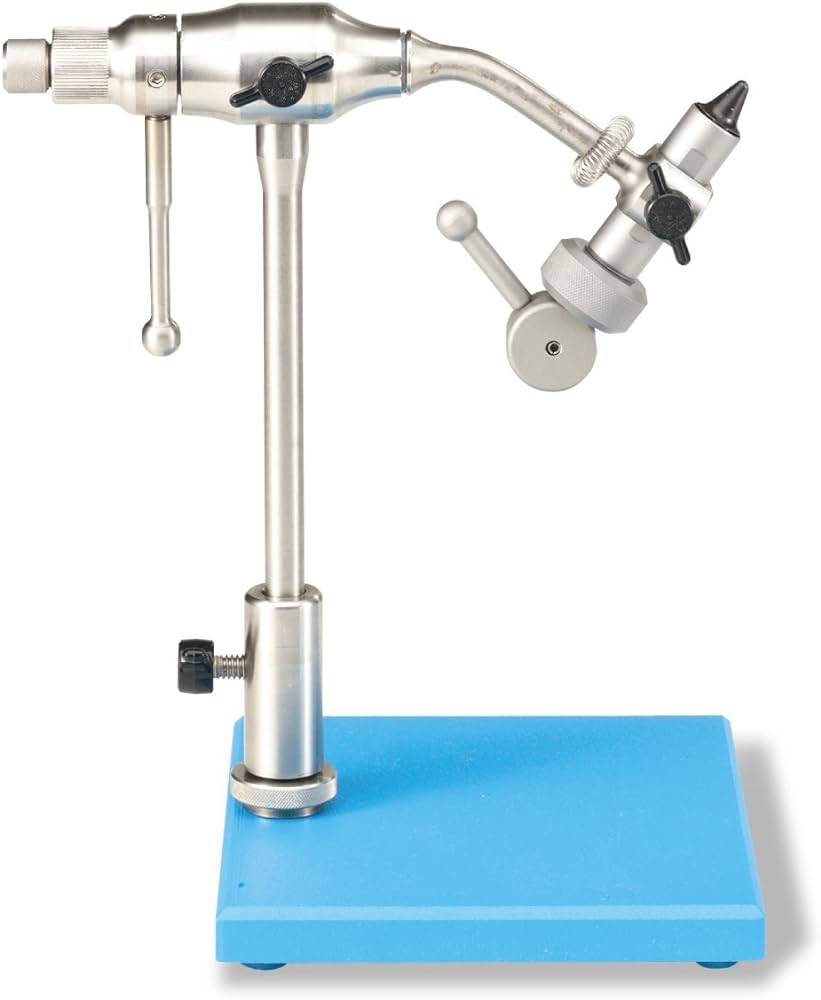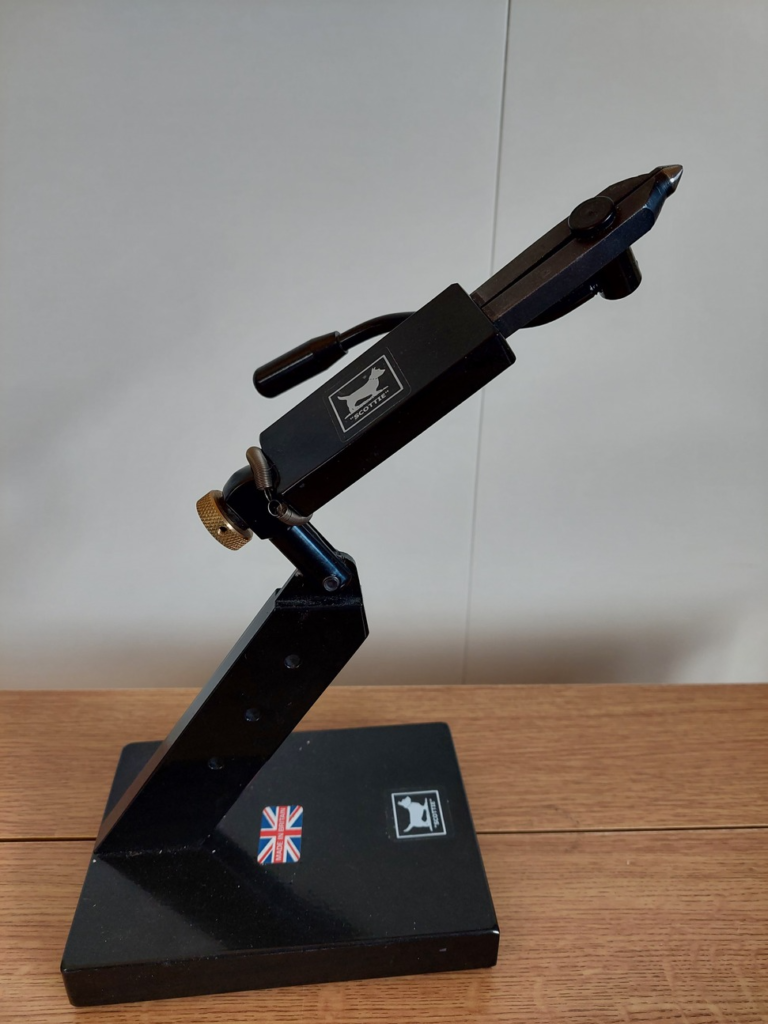
The vice is probably the most important tying tool, it needs to do two things;
Stationary Vice – As the name implies, it simply holds the hook in a stationary position and doesn’t turn.
Rotary Vice – Such as the Anvil Atlas or Cottarelli. This vice lets the hook turn using a lever or just twisting the vice jaw, on a rotary, the hook shank is usually centered on the spindle of the vice head rotation, which means that e fly will stay on the same plane as it is being turned.

The vice can come with a pedestal base or a table clamp, as well as a bewildering number of styles. The method of securing the hook in the vice can vary as well with spring loaded levers or cam and lever operated.

Turning Vice – Such as the Scottie. Some tyers don’t want the rotary function and just need to turn the fly for inspection.

Scissors – at least two are needed, one with a fine point that is primarily used for cutting thread, and the other larger pair with a serrated edge for cutting other materials. Loops on the handle should be of sufficient size to be comfortable to use. Scissors with a curved blade are also handy for things such as, forming muddler heads out of deer hair. If you are working with wire you don’t need to cut it off with scissors just ‘helicopter’ it off i.e. rotating the wire in a circular motion.

Bobbin holder – either metal or ceramic, cheap and cheerful or relatively expensive. It holds the spool and keeps tension on the thread whilst you tie, this keeps your hands free to manipulate materials. If you are using one with a metal tube, regularly inspect it for sharp edges which may damage your thread. The holder allows you to adjust the tension on the thread as you tie. I use Rite bobbin holders which have a ceramic tube and I find them to be easily adjustable and not too expensive.

Hackle pliers – many different types and weights. Used to hold the end of hackles, quills etc whilst winding on the hook. They should have sufficient weight to hold down the material you are winding, plus have a firm grip that isn’t going to slip or damage the material. Also handy for holding onto your thread if it breaks whilst tying. They should be able to hold the material firmly, but without any sharp edges.

Dubbing needle – Simply a needle attached to a handle. May be used to adjust materials, such as picking out dubbing to make it look scruffier and separating fibres. Essential if you want to apply dubbing using a split thread method. Also needed for applying varnish to the head.
Whip finish tool – is used to knot the thread which will finish off the fly. Used as an alternative to a hand whip finish. Advantages include being able to more precisely place the thread, plus it leaves a hand free to manipulate materials as you tie off. Can also be used to apply varnish to the head by putting the varnish on the thread prior to a whip finish.

Hair stacker – needed to tame deer/elk hair prior to putting on the hook.

To use, place the hair, fine end first, into the inner tube and tap the base on a solid surface. Slide the tube out of the base and the fine ends will be neat and even.
Hair comb – useful to comb through hair and remove unwanted material prior to putting it into the stacker.
Brush – for brushing out dubbing etc to imitate legs or just for a buggier look.
CDC clamps – used for holding, trimming and manipulating CDC feathers

Half hitch tool – useful for beginners and if you want to put in a quick half-hitch to secure the materials where they are before moving on. Can be combined with a dubbing needle. Also, useful when teaching younger students, until they can get the hang of a whip finish. Some pen sleeves can be used as well, for a cheaper alternative.
Dubbing twister – used when applying dubbing material to the hook with a dubbing loop.
UV torch & resin – alternative to varnish which can harden in 10 – 20 seconds, giving a smooth and glossy finish.
Electric burner – good for burning off errant hackle fibres and the like, giving a neater finish.
De-barbing tool – I would ideally use barbless hooks, but there is not as great a range, as yet.
Lighting – should also be considered, a good lamp is a priority.
Chair – for tying at home, especially for extended periods, investing in a suitable chair is vital and money well spent. Your chair can be nearly as important as your vice!
Waste bag – ideal for keeping your tying area tidy and more importantly, organised.